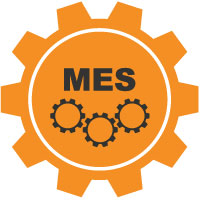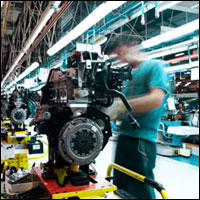CMS ERP
Assembly Line Automation
Assembly Line Automation with PlantTalk:Build
Our PlantTalk:Build module has been designed to assist the line operators with a single piece flow of commodities. This includes providing step-by-step work instructions at each applicable station, scanning and machine interfaces for part and component validation, work-in-process and finished good part labeling, as well as rack completion and shipment verification with the PlantTalk:MES. This process allows for full lot traceability of all applicable parts and components to the finished good part.
The end-user hardware that is typically used is a combination of compact-frame PCs or thin clients with flat panel monitors (optional touch screens), attached scanners at applicable stations, radio frequency units at every applicable tracking point and barcode label printers.
In a non-sequenced (batch) program, the application has a production schedule entry, which determines the sequence of different variations of parts to be built, as well as the associated quantity (for example, 100 of part X, then 100 of part Y, etc.). The production quantity is validated against a multiple of the standard pack, and if a part is scrapped in the build process and the production run is not complete, the quantity will automatically increment to ensure that the run is for a complete racks of parts.
In the event that the production run has completed, the production scheduler can create a new production run that will be started before the next one on the schedule to take care of scrap or defect issues. When this happens, a second label will be printed, if new production labels are being printed, to alert the operators that this part is not what they were expecting and to ensure they take care to build it properly and pack it properly.
In a sequenced operation, the build order process is determined by the sequenced data from the OEM, such a broadcast pulse or the 866 EDI transaction. If needed, the actual build process can be done out of sequence to accommodate line efficiencies, and the actual sequencing of parts will take place at the time of racking and shipping.
As the parts are built, the components used to create the parts are validated at the appropriate stations for replenishment. The license plate label is scanned when a new container of components is started. From this label, the quantity of the components will be known and as a part is processed at the station that uses the tracked component, the available parts remaining will be shown on the screen. When the quantity available goes negative, it shows an alert on the screen with a red background, along with an audible alarm.




